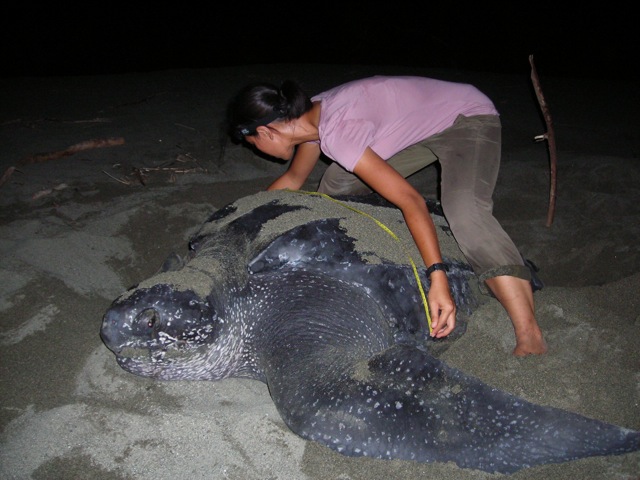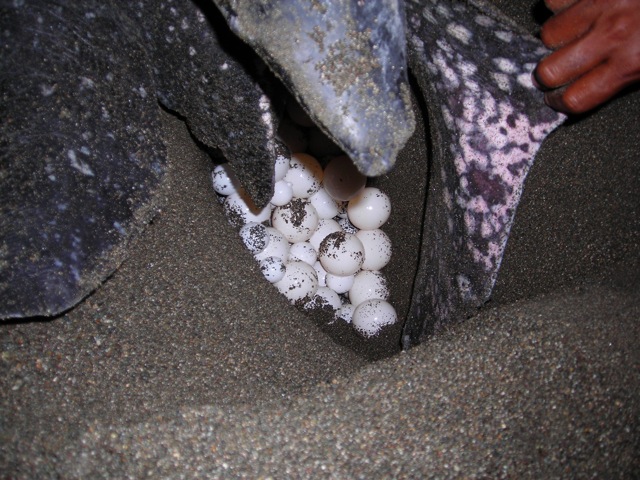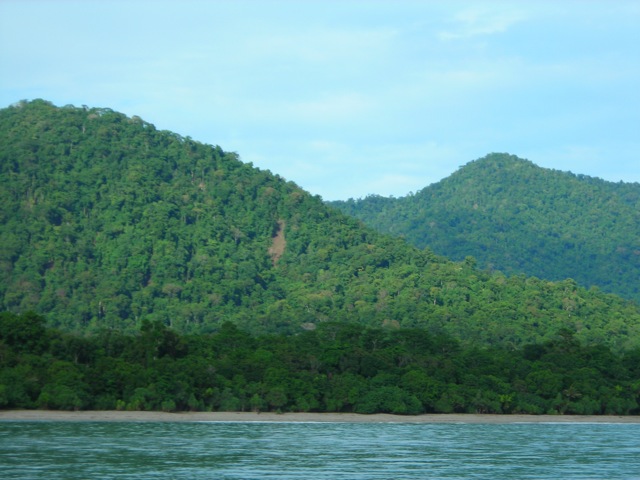

by Deasy Lontoh, Vertebrate Ecology Lab
In July 2009, I went to see the leatherback turtles in Papua. After a five-hour flight from Jakarta to Sorong, West Papua, and a six-hour boat ride east, I finally arrived at Jamursba Medi beach. It is the home of leatherback turtles and Birds of Paradise. Jamursba Medi consists of three beaches, and together they span approximately 18 km. The Tamrauw Mountains covered in pristine lowland rainforest give the beaches a lush emerald backdrop.
I patrolled one of Jamursba Medi beaches for three nights, and not a single leatherback appeared. On the fourth day, I went to Wermon, another nesting beach about 30 km from Jamursba Medi, with a small crew of people. That night around 10 pm, my walking partner’s keen eyes spotted the dark silhouette on the sand yards away and we rushed to it. I didn’t make out the silhouette right away, but I heard her front flippers hitting the sand as she pulled her heavy body forward and her laborious breathing. She was breathtaking! A leatherback’s carapace can get up to two meters long and their weight up to 900 kg. But the enormity of this giant was beyond my expectations. Such girth around the body! How strong must her front flippers be to pull such a heavy body! Her carapace was 167 cm long and 118 cm wide, and she could easily weigh more than 800 kg. She had smooth skin, and her muscular flippers reminded me of muscles of an elephant.

Once she located a good place, she started excavating. She dug with her hind flippers, which are surprisingly flexible and maneuverable. She scooped a handful of sand with the tip of her flippers and tossed it to the side. As she scooped, the flipper grazed the side of the nest, effectively smoothing and compacting the nest wall, which prevented it from collapsing. Once an appropriate depth was reached, she started to lay her eggs. While she laid her eggs, one flipper covered the nest opening to prevent sand from coming into the nest. Female turtles are in a trance-like state when they lay eggs, which allows researchers to mark individuals, measure carapace length and width, and attach transmitters. When she was done laying her eggs, she covered the nest with sand using her hind flippers. Then with the weight of her whole body, she packed the sand above the nest. But it was not over yet. With her powerful front flippers, she moved the sand towards the back of her body. Sand was flying everywhere! Then she started to circle, dramatically tossing the sand back. She was camouflaging her nest. Once she was done, she headed back to sea. It was definitely a meeting to remember.


